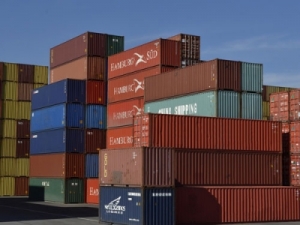MPI launches industry-wide project to manage feral deer
An industry-wide project led by Ministry for Primary Industries (MPI) is underway to deal with the rising number of feral pests, in particular, browsing pests such as deer and pigs.
 The strong growth forecast across most sectors and dairy prices expected to gradually increase over the next two years.
The strong growth forecast across most sectors and dairy prices expected to gradually increase over the next two years.
The Ministry for Primary Industries (MPI) says the outlook for New Zealand primary industries is positive.
The strong growth forecast across most sectors and dairy prices expected to gradually increase over the next two years.
MPI Director of Sector Policy, Jarred Mair, says the latest Situation and Outlook for Primary Industries (SOPI) shows that, overall, exports have returned to growth this year – providing a clear signal of the strength of our primary industries.
"New Zealand primary industry export revenue is estimated to reach over $36.7 billion in the year ending June 2016, supported by strong growth in horticulture and other primary sector exports and foods," says Mair.
Recent years have provided challenges for a number of our sectors, and underlined the highly competitive and dynamic markets we trade in.
For some sectors a drop in the New Zealand dollar has softened the impact of lower US dollar prices. Meanwhile on-farm, production across the primary sector has been relatively stable as El Nino conditions did not result in widespread drought.
"The dairy industry has responded decisively to the subdued outlook through consolidation of their businesses to improve productivity and manage their costs," says Mair.
"Dairy prices have remained weak as global supply is still abundant. New Zealand production is down marginally but export volumes are up. Production is still high in the EU [European Union], which is keeping downward pressure on prices.
"Overall there has been a 6% decline in the value of dairy exports in the past year, but an expected gradual price recovery should lead to increasing dairy export values looking out 2 to 3 years. Overall our forecasts show 34% growth out to 2020."
Mair says horticulture exports are expected to continue their run of impressive growth over the medium term.
Horticulture exports exceeded $5 billion for the first time in 2015/16. Kiwifruit exports hit record levels for the year to March 2016, and exports of wine, apples, and pears are increasing due to new plantings reaching maturity. As an example, apple and pear export revenue has doubled since 2012, estimated to reach almost $700 million for the year ending June 2016. Horticulture prices have also increased as New Zealand has maintained its position as a supplier of premium products.
"Strong growth is also being seen in exports of innovative processed foods, honey, live animal, and other products.
"The outlook for the primary sector is supported by industry's significant investments in processing capacity across the country in a range of sectors.
"Free trade agreements will also help grow our exports, while population growth and economic development throughout Asia will support increased demand for New Zealand's protein, horticulture, wood, and fibre products," says Mair.
Thirty years ago, as a young sharemilker, former Waikato farmer Snow Chubb realised he was bucking a trend when he started planting trees to provide shade for his cows, but he knew the animals would appreciate what he was doing.
Virtual fencing and herding systems supplier, Halter is welcoming a decision by the Victorian Government to allow farmers in the state to use the technology.
DairyNZ’s latest Econ Tracker update shows most farms will still finish the season in a positive position, although the gap has narrowed compared with early season expectations.
New Zealand’s national lamb crop for the 2025–26 season is estimated at 19.66 million head, a lift of one percent (or 188,000 more lambs) on last season, according to Beef + Lamb New Zealand’s (B+LNZ) latest Lamb Crop report.
Farmers appear to be cautiously welcoming the Government’s plan to reform local government, according to Ag First chief executive, James Allen.
The Fonterra divestment capital return should provide “a tailwind to GDP growth” next year, according to a new ANZ NZ report, but it’s not “manna from heaven” for the economy.

OPINION: Your old mate welcomes the proposed changes to local government but notes it drew responses that ranged from the reasonable…
OPINION: A press release from the oxygen thieves running the hot air symposium on climate change, known as COP30, grabbed your…